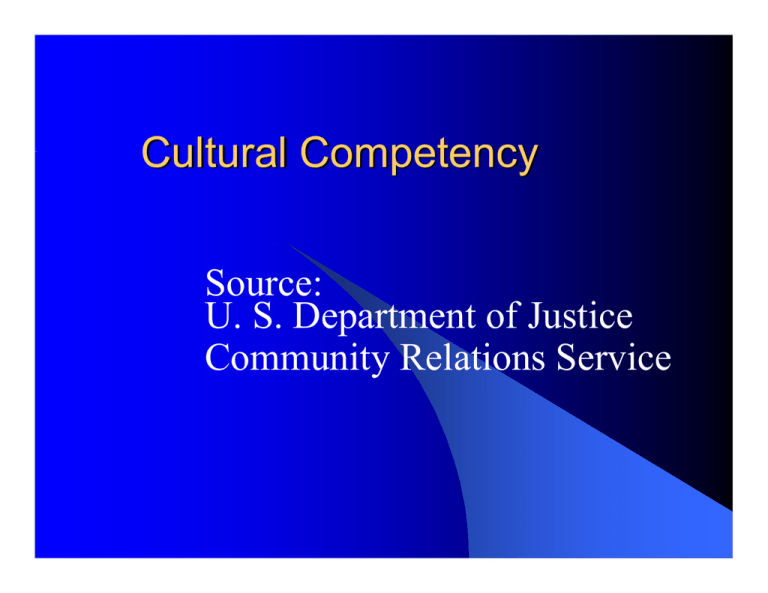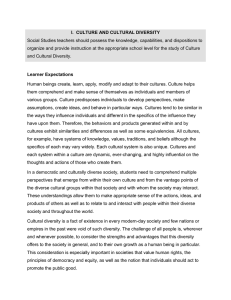Cultural Competency Source: U. S. Department of Justice Community Relations Service
advertisement

Cultural Competency Source: U. S. Department of Justice Community Relations Service African American Cultures Loyalty, trust, and kinship z Communication style is expressive z Pride & Dignity z Strong link with extended family/children z Strong church influence z RESPECT z White/Anglo Cultures z Individualism and personal achievement z Competition z Primarily nuclear family z Social relationships are informal z Privacy/space z RESPECT Hispanic/Latino Cultures z Family & Religion z Pride in heritage z Higher value placed on interaction with others z Communication is expressive z Honor, dignity and RESPECT Native American Cultures zIndividual zHome Clan – Tribe zFamily roles zCustoms zReligion zChildren zEducation zRESPECT Asian Cultures z Cooperation/ z Patience Sharing z Harmony z Conversation z Politeness z Formality z Indirectness z Family Honor z RESPECT Arab, Muslim and Sikh Cultures z Individual- Village z Family roles are well defined z Gender roles are well defined z Customs are steeped in religion z Children important z RESPECT Top Ten Cross – Cultural Tips z 10. Diversity has many levels and complexities. z 9. Be willing to admit what you don’t know. z 8. Notice and remember what people call themselves. z 7. Remember that you are an insider to your culture, and an outsider to other cultures. Top Ten Cross – Cultural Tips continued . . . z 6. Look for aspects of the other culture that are admirable. z 5. Never imply that the established way of doing something is the only way or the best way. z 4. Be formal at first in language and in behavior. Top Ten Cross – Cultural Tips continued . . . z 3. Never make assumptions based on a person’s appearance, name or group. z 2. Never show amusement or shock at something that is strange to you. z 1. Enjoy meeting people! Communication z Every new bit of information either helps or hinders the situation –Recognize your communication style –Expect to learn something about yourself and others –Speak clearly and use personal examples when making a point Communication continued . . . –Participate honestly and openly –Engage in the process by listening actively and carefully –Confidentiality –Take responsibility for any misunderstanding that may occur.






